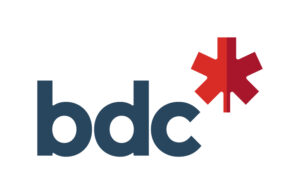
Marc Lindner’s roofing company had a problem some businesses would only be too happy to share. Sales had jumped 50% each year since the company started in 2014. Its workforce had grown from one to 35 employees in just a few years.
But despite the explosive growth, Kitchener, Ont.-based Black and White Commercial Roofing was having cash flow issues. Lindner had focused so heavily on sales and customers that financial management had been neglected. He was making major purchases without proper planning and didn’t have a good idea about his costs.
“We never had a budget,” Lindner says. “There wasn’t a lot of planning or preparation. When we bought capital equipment, it was always reactive.”
Lindner turned to BDC for advice on how to overhaul his financial management. A BDC expert did a thorough review of the company’s finances and future goals. Lindner and his team then sat down to work out an action plan to reach those goals.
The exercise quickly paid off. They created the company’s first annual budget and cash flow projections for the coming year and also looked carefully at costs and margins.
Eye-opening process
The process was eye-opening. For example, Lindner hadn’t realized that some customers were taking over 90 days to pay bills. That, in turn, had contributed to the company’s cash flow hiccups. Lindner started working with clients to reduce payment times.
He also finally got an understanding of his costs, which allowed him to look at ways to reduce them. He was able to find significant savings by cutting overhead and unproductive marketing efforts.
Now that we have the costs down on paper, we can plan out the longevity of equipment and new purchases.
Meanwhile, creating cash flow projections helped Black and White Roofing plan capital purchases to reduce impacts on working capital. “Now that we have the costs down on paper, we can plan out the longevity of equipment and new purchases,” Lindner says.
With BDC’s help, Lindner also worked with his team to identify a set of key performance indicators (KPIs) to help the business monitor its financial management. “We had been struggling with KPIs for a couple of years,” he says.
3 tips for better financial management
Don’t wait until year-end to review your finances. Financial management should be a hands-on, year-round process. Here are three tips:
1. Create an annual budget and cash flow projections
These documents are the foundation of your financial management. Without them, your business is flying without instruments.
2. Establish relevant KPIs
Brainstorm with your team about KPIs relevant to your business goals. These could include:
- growth and profitability ratios (e.g. gross margin by product)
- liquidity ratios (e.g. sales to working capital ratio)
- activity ratios (e.g. average accounts receivable days outstanding)
3. Regularly monitor and improve
Financial management should be a continual process that happens through the year. Consider holding monthly meetings to review your KPIs and compare actual results to targets and projections, plus more comprehensive quarterly meetings.
Financial management: A common challenge for entrepreneurs
Poor financial management is a challenge for many business owners who are absorbed in the day-to-day hurdles of running their company.
“Many entrepreneurs don’t always have a good handle on everything financial in their business,” says Roshan D’Souza, Senior Client Partner in BDC’s Advisory Services team.
“They tend to believe that financial management is only for accountants. The reality is that entrepreneurs need to understand how sound financial management practices contribute to the success of their business. For example, it’s important to periodically review your company’s financial performance, with relevant and reliable information, for decision making,” he says.
The impacts of lax financial management can be especially serious in fast-growing businesses. “These companies are burning cash very quickly,” D’Souza says. “If they don’t have a basic financial process in place, their risks go up significantly.”

“We are working as a team now”
For Black and White Commercial Roofing, much-improved financial controls have not only made it easier to ensure adequate cash flow, but also helped Lindner cut costs, vastly enhance business planning and improve teamwork in the company.
Lindner now monitors his cash flow on a weekly basis and holds monthly meetings with his team to review KPIs and compare results to targets. They also have quarterly meetings where they go deeper into the numbers, including project costing.
“Continuous improvement is a big part of this,” Lindner says. “We’ve developed a lot of transparency among senior management. We discuss variations in the budget and where we’re going.”
He believes the financial management makeover has laid a solid foundation for the company to keep up its fast pace of growth and meet its ambitious sales targets. The team meetings and transparency have also brought the business closer together.
“Before, we were working in silos, in our own little areas,” Lindner says. “We are working as a team now. Everyone knows where the business is going. It has brought us together as a company.”
For more information on bdc:
https://www.bdc.ca/en/pages/home.aspx





